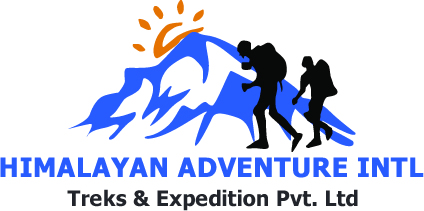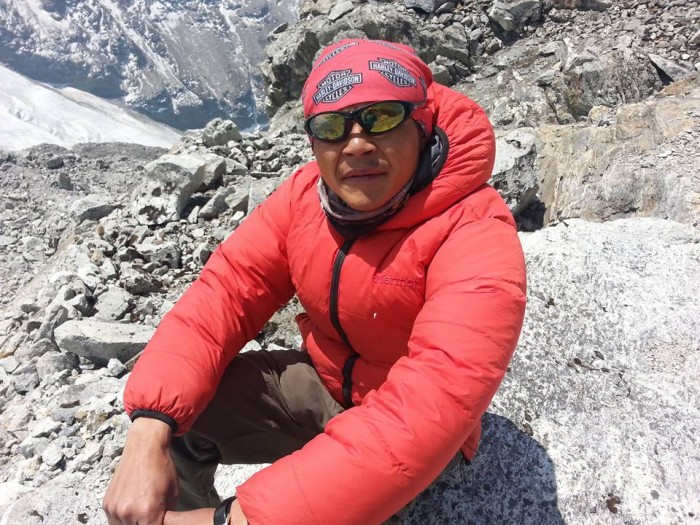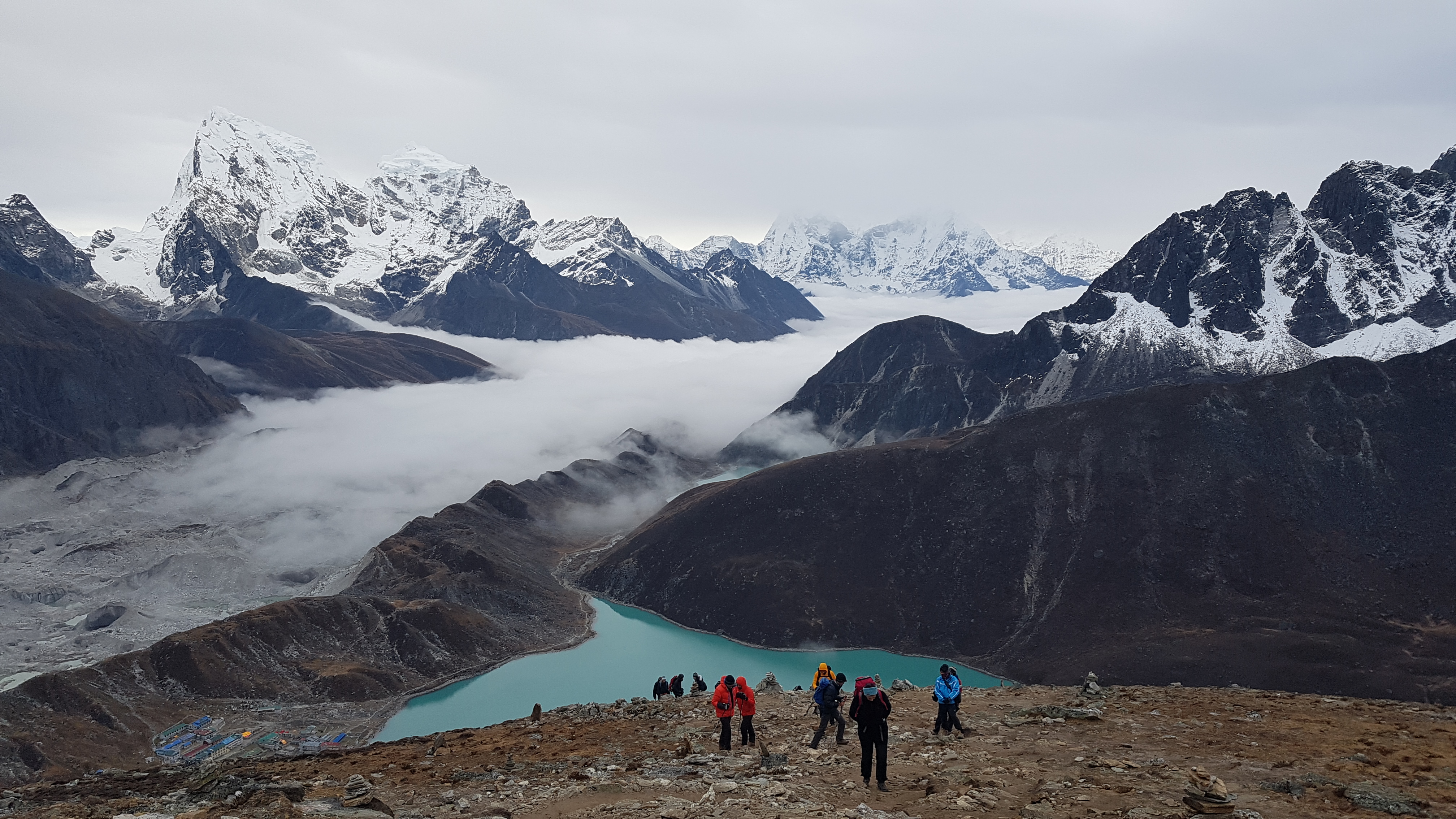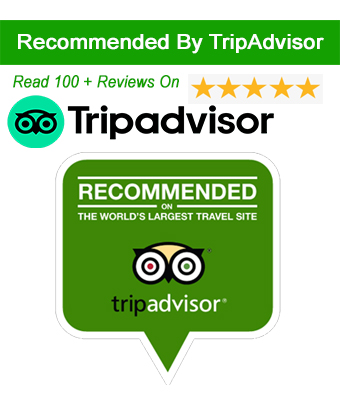The Gokyo Lake Trek is a breathtaking Himalayan journey leading you to the turquoise glacial lakes nestled beneath the towering peaks of the Everest region. It is a lesser-crowded but equally dramatic alternative to the traditional Everest Base Camp Trek. From the mesmerizing view of Gokyo Ri to the pristine lakes and glaciers of the Gokyo Valley, this trek offers a stunning combination of nature, culture, and adventure.
At Himalayan Adventure International Treks, we provide expertly crafted Gokyo Ri trek packages for all levels of trekkers—solo travelers, couples, and groups. This comprehensive guide covers everything you need: Gokyo Lake trek map, Gokyo Ri trek itinerary, cost, difficulty, weather, and even comparisons with other classic treks like EBC and Renjo La Pass.
🏔️ Overview of Gokyo Lake Trek
-
Region: Everest/Khumbu
-
Max Elevation: 5,357m (Gokyo Ri)
-
Trek Duration: 9 to 12 days
-
Difficulty: Moderate to Challenging
-
Best Time: March–May and September–November
-
Start/End Point: Lukla
-
Highlights: Gokyo Lakes, Gokyo Ri, Ngozumpa Glacier, Renjo La Pass (optional), Sherpa culture, Everest panorama
📍 Gokyo Lake Trek Map
The Gokyo Lake Trek map showcases a looped route that begins and ends in Lukla. You’ll pass through Phakding, Namche Bazaar, Dole, Machhermo, and finally into the Gokyo Valley. Optional extensions include Renjo La Pass and return via Thame.
🧭 Gokyo Lake Trek Itinerary (9 Days)
This Gokyo Lake Trek 9 days itinerary is perfect for trekkers with limited time but enough acclimatization.
Day 1: Flight from Kathmandu to Lukla (2,840m), trek to Phakding (2,610m)
Day 2: Phakding to Namche Bazaar (3,440m)
Day 3: Acclimatization Day in Namche – Hike to Everest View Hotel
Day 4: Namche to Dole (4,040m)
Day 5: Dole to Machhermo (4,470m)
Day 6: Machhermo to Gokyo (4,790m)
Day 7: Early hike to Gokyo Ri (5,357m) for sunrise views; explore lakes
Day 8: Gokyo to Dole
Day 9: Dole to Lukla via Namche; overnight and prepare for return flight
📍 Alternative longer itinerary includes Renjo La Pass, EBC with Gokyo Lake, or Three Passes Trek.
🧗 Gokyo Lake Trek Difficulty
The Gokyo Lake Trek difficulty is rated moderate to challenging, depending on altitude gain and acclimatization. The trail involves daily 5–7 hours of trekking, high elevations (above 4,000m), and thin air.
Trekkers should be in good physical condition and be prepared for steep ascents like Gokyo Ri hiking and Renjo La Pass.
📊 Gokyo Lake Trek Cost 2025/26
The Gokyo Lake Trek cost varies based on services, duration, and trekking style (solo, guided, or group join). Below is a detailed breakdown:
🧾 Gokyo Lake Trek Cost Per Person (Standard Package):
| Trekking Style |
Foreigners (USD) |
Nepalis (NPR) |
| Solo with Guide/Porter |
$1150 – $1300 |
NPR 65,000 – 85,000 |
| Group Join (4–10 pax) |
$950 – $1100 |
NPR 60,000 – 70,000 |
| Luxury Lodge Trek |
$1300 – $1700 |
NPR 100,000+ |
| Gokyo Lake Trek Cost for Nepali (Basic) |
— |
NPR 45,000 – 60,000 |
🎒 Hire a Guide Gokyo Lake Trek Cost
-
Per Day (Guide Only): $25 – $35 USD
-
Porter (Per Day): $20 – $25 USD
-
Per Person Total (9 Days): $450 – $550 (Guide + Food + Permits)
💬 On Reddit, many trekkers suggest that the best group join Gokyo Lake trek cost is around $850 for foreigners, all-inclusive.
📅 Gokyo Ri Trek 12 Days Itinerary
A 12-day Gokyo Ri trek itinerary allows more acclimatization, better sightseeing, and optional Renjo La or Everest Base Camp extensions.
🗓️ Gokyo Ri 12-Day Itinerary:
Day 1–7: Same as 9-day plan
Day 8: Cross Renjo La Pass (5,360m) to Lungden
Day 9: Trek to Thame (3,800m)
Day 10: Trek to Namche
Day 11: Trek to Lukla
Day 12: Fly to Kathmandu
📌 Check the Renjo La Pass map and EBC with Gokyo Lake itinerary for more variations.
🌦️ Gokyo Ri Trek Weather and Best Seasons
✅ Best Time to Trek:
-
Spring (Mar–May): Clear skies, rhododendrons in bloom, mild temps
-
Autumn (Sept–Nov): Stable weather, perfect visibility, cooler nights
❌ Not Recommended:
-
Winter (Dec–Feb): Harsh cold, snow closures (esp. Renjo La)
-
Monsoon (June–Aug): Rain, poor visibility, landslides
🌤️ Expect temperatures between -5°C to 15°C in spring/autumn. Gokyo Ri weather at dawn can drop to -10°C.
🏞️ Gokyo Lakes and Glaciers
The trek showcases six major Gokyo Lakes, including:
-
Longponga Tsho
-
Taboche Tsho
-
Dudh Pokhari (main Gokyo Lake)
-
Thonak Tsho
-
Ngozumpa Tsho
-
Gyazumba Tsho
Plus, you’ll encounter the Ngozumpa Glacier, the largest glacier in Nepal.
🧭 Gokyo Valley Trekking Highlights
-
Gokyo Valley’s yak pastures and stone-walled villages
-
Cultural interactions with the Sherpa community
-
Climb Gokyo Ri Nepal (5,357m) for 360° mountain views
-
Everest (8,848m), Cho Oyu (8,188m), Lhotse, Makalu visible
-
Tranquility compared to the busy EBC route
📸 Join our Gokyo Valley tours for expert-guided experiences.
🧑🤝🧑 Group Join Gokyo Lake Trek – Best Deals
Himalayan Adventure International Treks offers group join Gokyo Lake Trek cost options starting at:
-
$999/person for 9 days (min. 4 pax)
-
Includes flights, permits, guide/porter, meals, and accommodation
🚌 Best group join Gokyo Lake Trek cost deals are available from October 2025 departures.
🚁 Flight to Gokyo Ri Trek – Lukla Flights
Your adventure starts with a thrilling flight from Kathmandu (or Ramechhap) to Lukla Airport, considered one of the most exciting airstrips globally.
💡 Plan early morning flights to avoid weather delays.
🗺️ Gokyo Lakes and Ri Trek – Route Comparison
| Route |
Max Elevation |
Duration |
Highlights |
| Gokyo Lakes Trek |
4,790m |
9 days |
Lakes, Ri hike |
| Gokyo Ri Trek |
5,357m |
12 days |
Everest view |
| EBC with Gokyo Lake |
5,545m |
14–16 days |
Full Everest experience |
| Gokyo Lake Renjo La Pass Trek |
5,360m |
12–13 days |
Pass & less-crowded trail |
💼 What’s Included in Our Gokyo Ri Trek Packages
-
Airport pickup & drop-off
-
Domestic flights (KTM–Lukla–KTM)
-
Licensed English-speaking guide
-
Porter (1 porter per 2 trekkers)
-
All meals (B/L/D) during trek
-
Twin-sharing teahouse accommodation
-
Sagarmatha National Park Permit
-
TIMS card
-
Gokyo Ri trek timetable & support
-
Emergency evacuation coordination
🧳 What to Pack for Gokyo Lake Hiking
-
Down jacket and sleeping bag (-15°C rated)
-
Layered clothing (base, fleece, waterproof)
-
Hiking boots, poles, sunglasses, hat
-
Refillable water bottle and purification tablets
-
Sunscreen, lip balm, personal first-aid kit
🔀 Combine Gokyo Lake Trek with Other Treks
-
EBC with Gokyo Lake: See both Everest Base Camp and Gokyo
-
Gokyo Lake Renjo La Pass Trek: Add a scenic high-altitude challenge
-
Three Passes Trek: Gokyo + EBC + Cho La + Kongma La
-
Round Annapurna Trek itinerary: Explore the Annapurna region post-Gokyo
-
Mardi Himal Trek Itinerary 4 days: Quick cultural mountain escape
-
Pikey Peak Trek cost: Short, budget-friendly alternative in lower Everest
🧭 Why Choose Himalayan Adventure International Treks?
-
✅ Locally owned and operated
-
✅ 20+ years of trekking expertise
-
✅ Custom itineraries and private groups available
-
✅ Affordable packages and Gokyo Lake trek cost for Nepali
-
✅ Government-licensed guides and 24/7 support
🏁 Final Thoughts: Is the Gokyo Lake Trek Worth It?
Absolutely. The Gokyo Lakes and Ri Trek offers one of the best high-altitude adventures in Nepal—without the crowds of the classic Everest Base Camp trail. With its majestic lakes, glaciers, Sherpa villages, and unforgettable summit of Gokyo Ri, this trek is a life-changing journey. Whether you're a first-timer or returning to Nepal, Gokyo Valley trekking should be on your bucket list.
📞 Book Your Gokyo Lake Trek Today!
Ready to start your journey? Contact Himalayan Adventure International Treks for customized packages, expert local guides, and unbeatable value for the best group join Gokyo Lake Trek cost!
📧 Email: info@himalayanadventureintl.com
📱 WhatsApp/Viber: +977-9803526139

 Plan Your Trip Now
Plan Your Trip Now 












